NTier Architecture Explained Rosa Fiore

AWS Three Tier Architecture DevOps Cloud Computing Towards AWS
This video explains the concept of n-Tier architecture and why it's so useful to your business applications. To learn more: http://www.mrc-productivity.com.
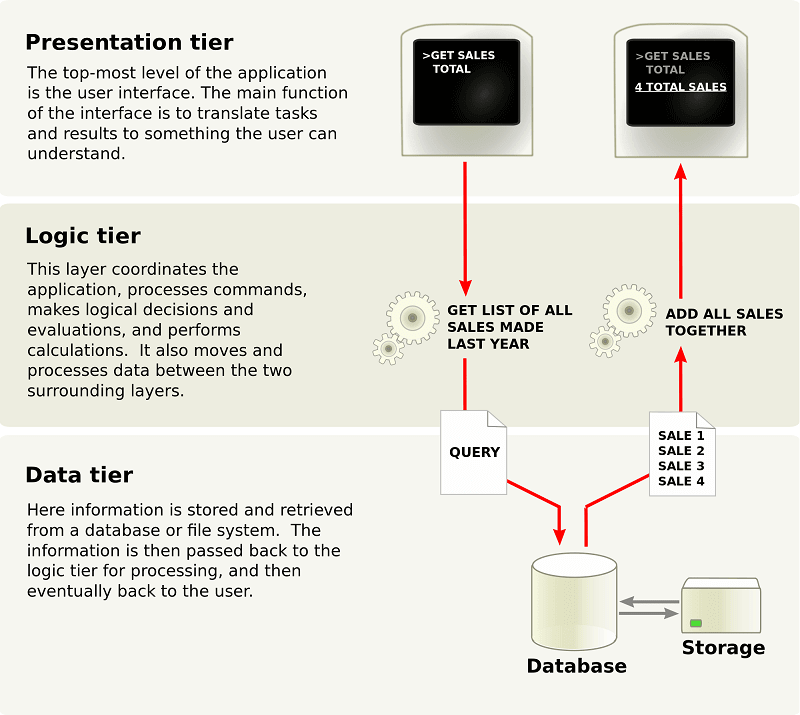
What is NTier Architecture? Examples, Tutorials & More
N-Tier Architecture, also known as Multi-Tier Architecture, is a design pattern that addresses these needs by breaking down applications into distinct layers, each with its own specific.
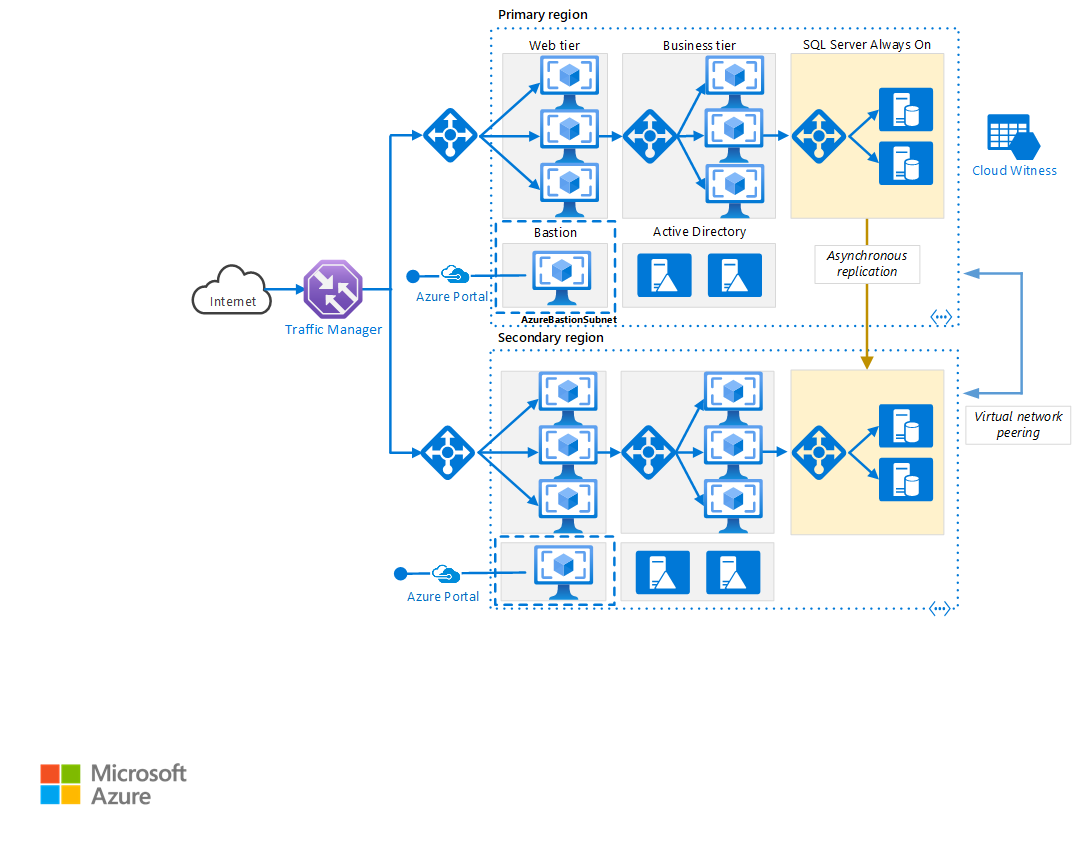
Multiregion Ntier application Azure Architecture Center Microsoft
Definition of N-Tier Architecture. N-tier architecture is also called multi-tier architecture because the software is engineered to have the processing, data management, and presentation functions physically and logically separated. That means that these different functions are hosted on several machines or clusters, ensuring that services are.
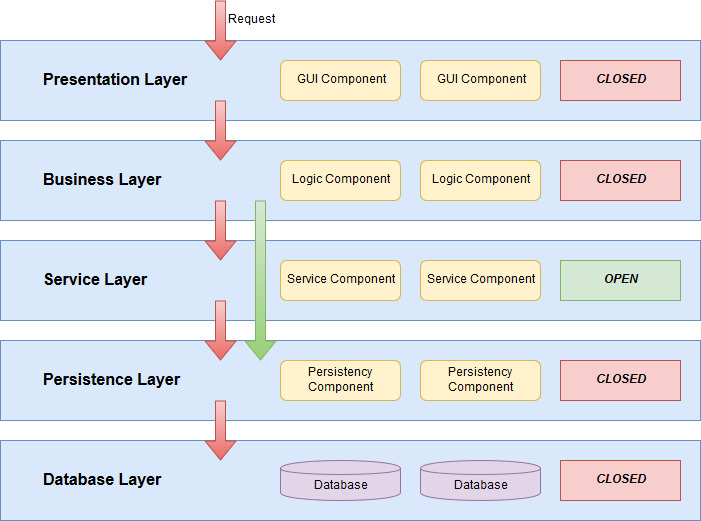
NTier Architecture Explained Rosa Fiore
When business computing began to move from the mainframe to more affordable commodity machines, one would pick a given computer and "promote" it to server status by installing a database engine, some sort of code interpreter plus compiler, and develop software code that would then create the needed software tool. This meant that the user interface software (UI), the program itself, and the.

2 Tier 3 Tier N Tier Architecture The Architect
N-Tier Architecture: Tier 2, Tier 3, and Multi-Tier Explained. When business computing began to move from the mainframe to more affordable commodity machines, one would pick a given computer and "promote" it to server status by installing a database engine, some sort of code interpreter plus compiler, and develop software code that would.

N tier Architecture Basics YouTube
In N-tier, "N" refers to a number of tiers or layers are being used like - 2-tier, 3-tier or 4-tier, etc. It is also called " Multi-Tier Architecture". The n-tier architecture is an industry-proven software architecture model. It is suitable to support enterprise level client-server applications by providing solutions to scalability.

What Is N Tier Architecture Design Talk
Multitier architecture. In software engineering, multitier architecture (often referred to as n-tier architecture) is a client-server architecture in which presentation, application processing and data management functions are physically separated. The most widespread use of multitier architecture is the three-tier architecture .
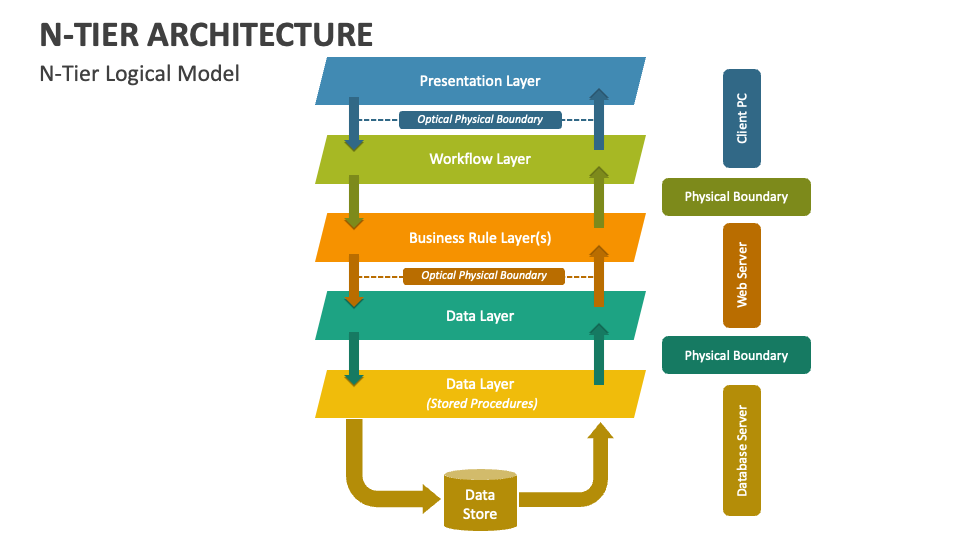
NTier Architecture PowerPoint Presentation Slides PPT Template
Thus, Tier 2 architecture solutions started to be utilized. As the internet became popular in the 1990s, it brought with it a revolution in terms of a user interface which was more performant and capable, but necessitated a specific web server. This widely empowered the proliferation of Tier 3 architecture in which the UI component was
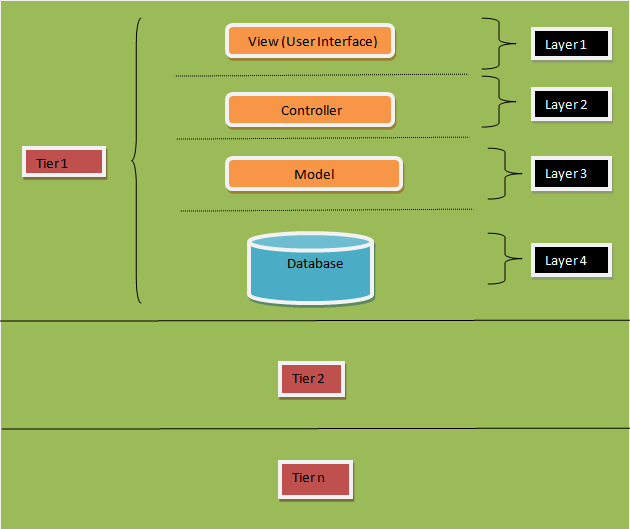
What I learnt today Layered and ntier architecture
N-tier is also called multi-layer or multi-tier architecture. The N here represents a number like 2,3,4,5… The most common one is the 3-tier architecture which separates the presentation layer.
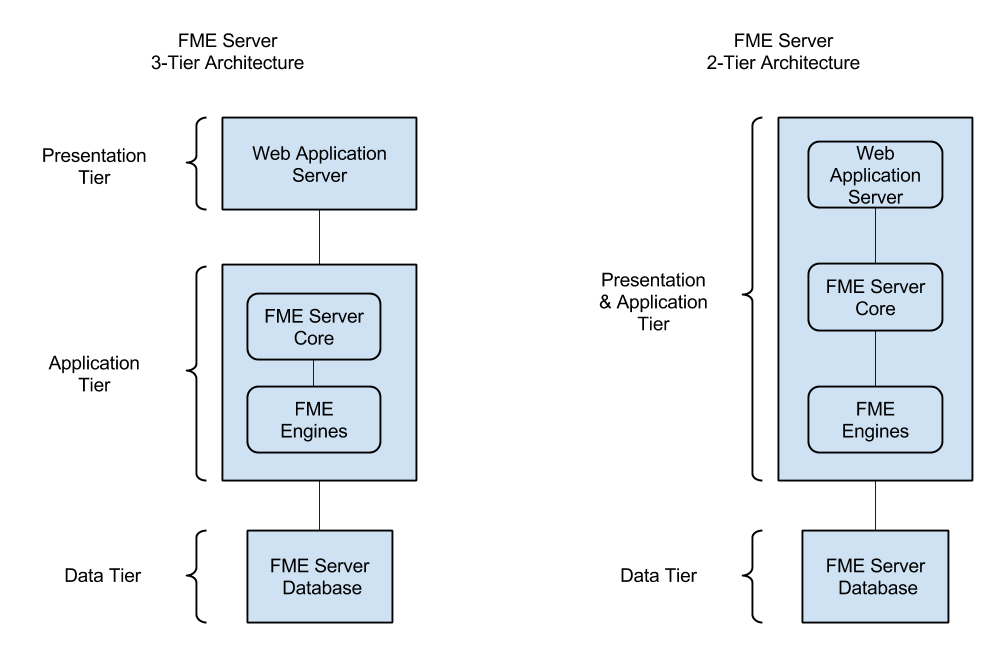
FME Server and NTier Architecture
N-tier architectures are usually connected in a linear narrative, that is to say, we must pass through one tier to get to the next. Furthermore, despite the physical and logical separation of components, an N-tier application appears and functions as a single unit to the user. This is an example of distributed networking.
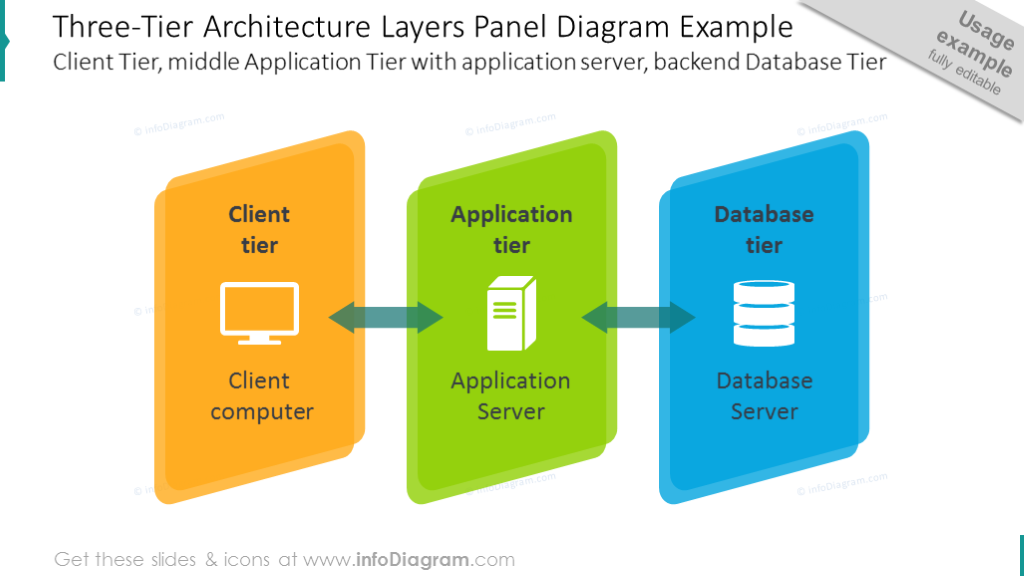
Threetier architecture layers panel diagram with icons
N-Tier Architecture, also known as Multi-Tier Architecture, is a design pattern that separates an application into distinct layers or tiers, each with its specific responsibilities. This approach.
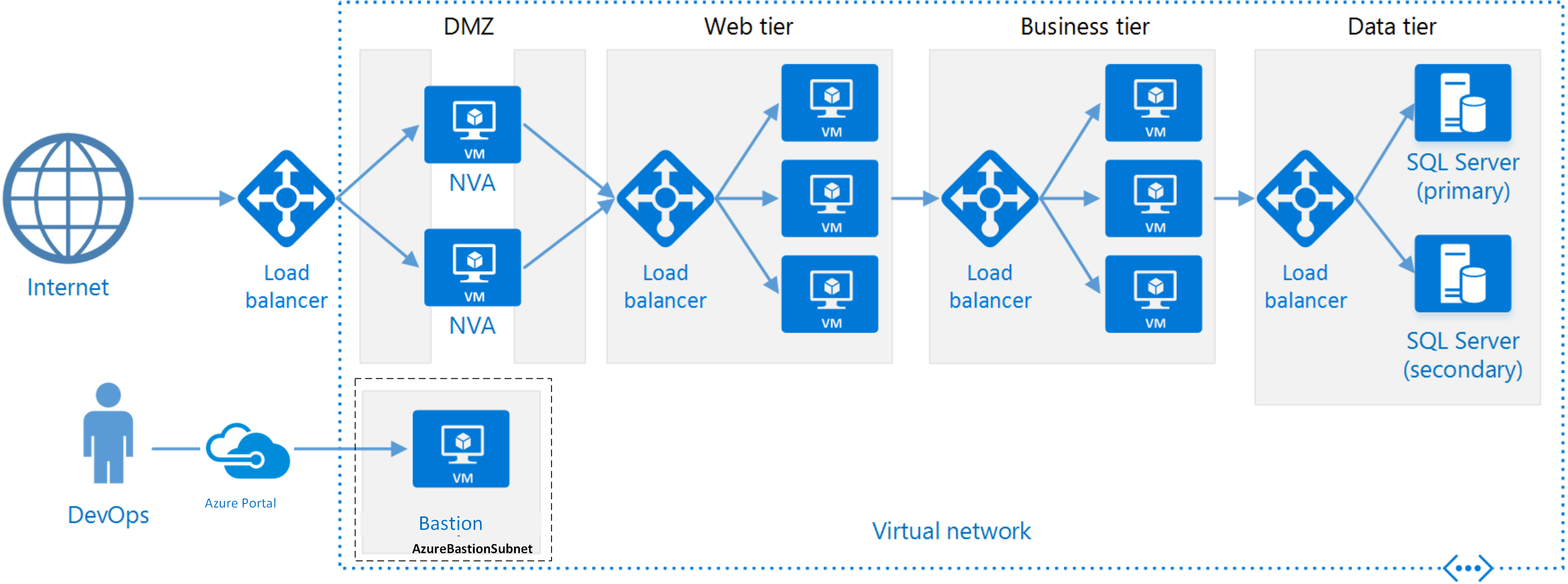
n tier architecture diagram n tier architecture explained Kellydli
Design Patterns. 1. Introduction. In this tutorial, we'll explore the intricate world of tiered architectures, dissecting the evolution from the simplicity of one-tier systems to the complexity of N-tier and microservice architectures. Understanding these architectures is crucial for designing scalable, maintainable, robust software systems.
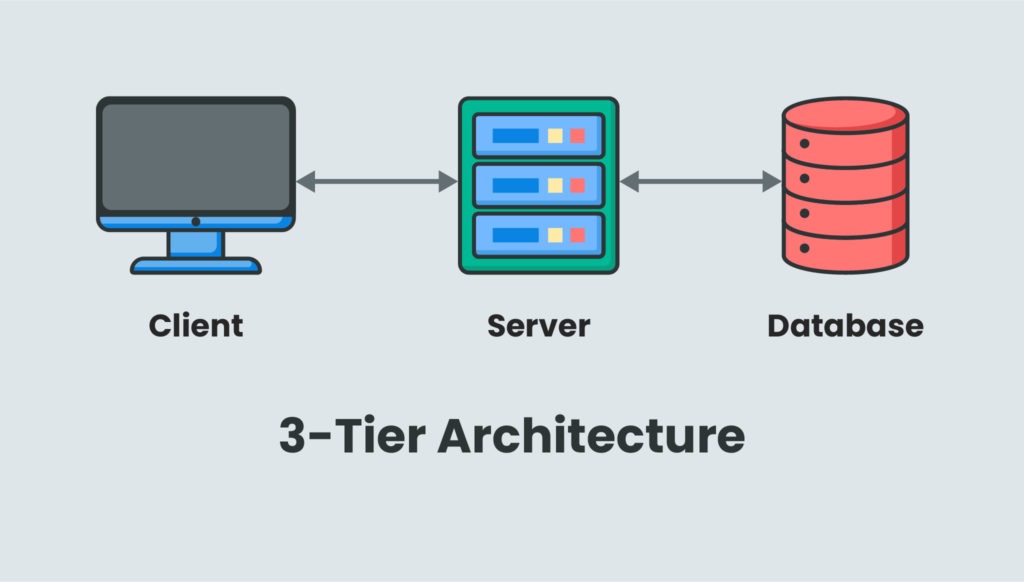
13 Basic SAP Terms Explained (+ the SAP Full Forms) INUI
N-tier architecture style. An N-tier architecture divides an application into logical layers and physical tiers. Layers are a way to separate responsibilities and manage dependencies. Each layer has a specific responsibility. A higher layer can use services in a lower layer, but not the other way around. Tiers are physically separated, running.
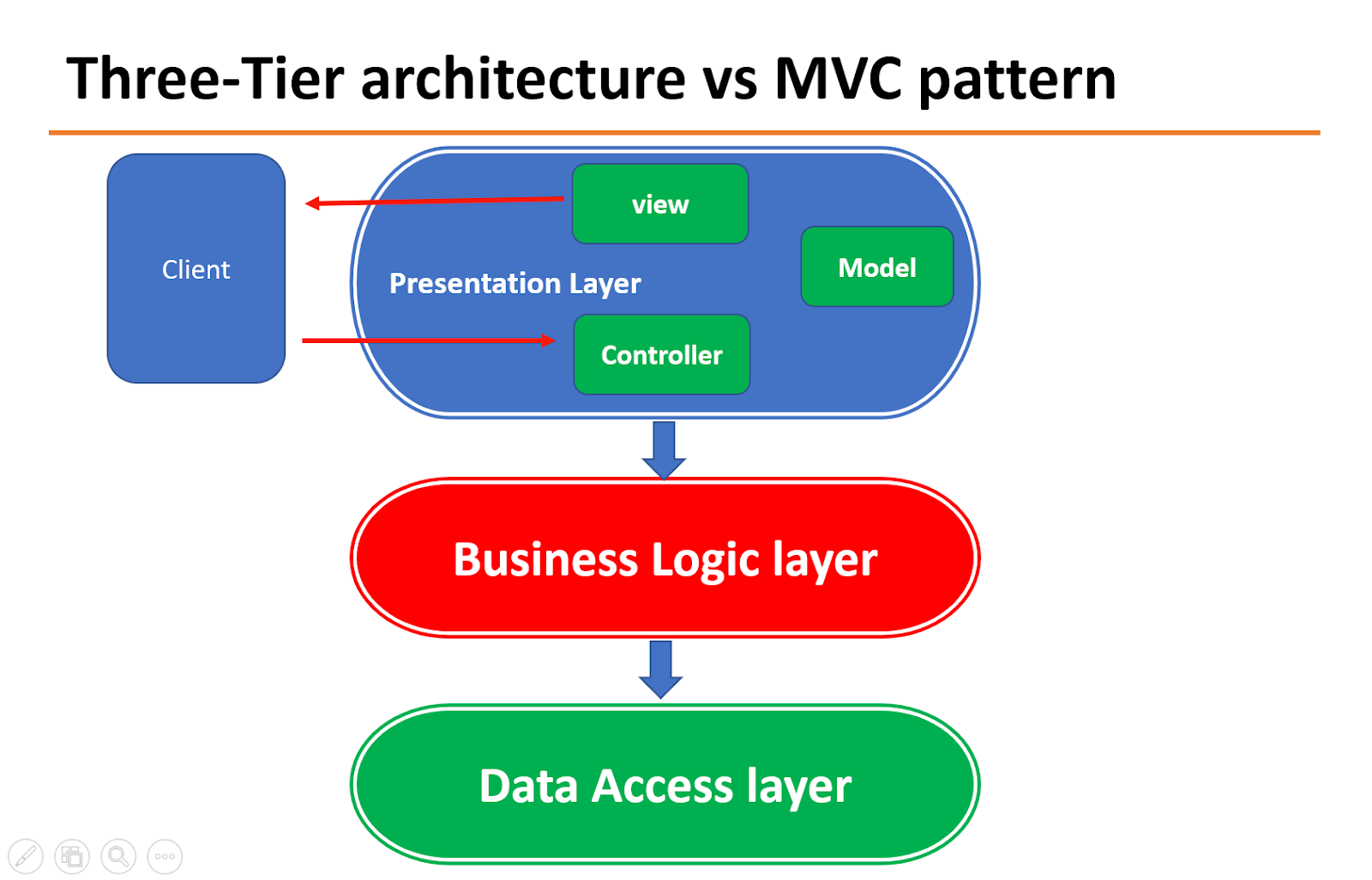
presentation layer in 3 tier architecture
N tier architecture means splitting up the system into N tiers, where N is a number from 1 and up. A 1 tier architecture is the same as a single process architecture. A 2 tier architecture is the same as a client / server architecture etc. A 3 tier architecture is a very common architecture. A 3 tier architecture is typically split into a.

Difference Between Two Tier And Multi Tier Architecture Design Talk
The multi-tier application (three-tier, n-tier, and so forth.) has been a cornerstone architecture pattern for decades, and remains a popular pattern for user-facing applications.Although the language used to describe a multi-tier architecture varies, a multi-tier application generally consists of the following components:
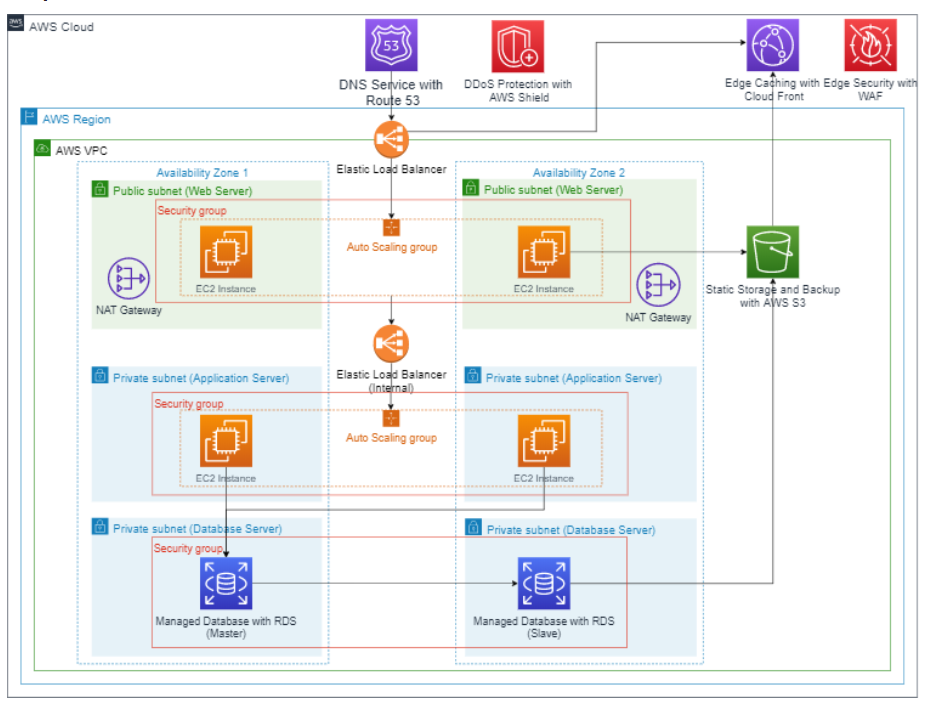
Overview Of 1Tier 2Tier 3Tier Architecture In AWS
In two-tier architecture the presentation tier - and therefore the end user - has direct access to the data tier, and the business logic is often limited. A simple contact management application, where users can enter and retrieve contact data, is an example of a two-tier application. N-tier architecture. N-tier architecture - also called or.